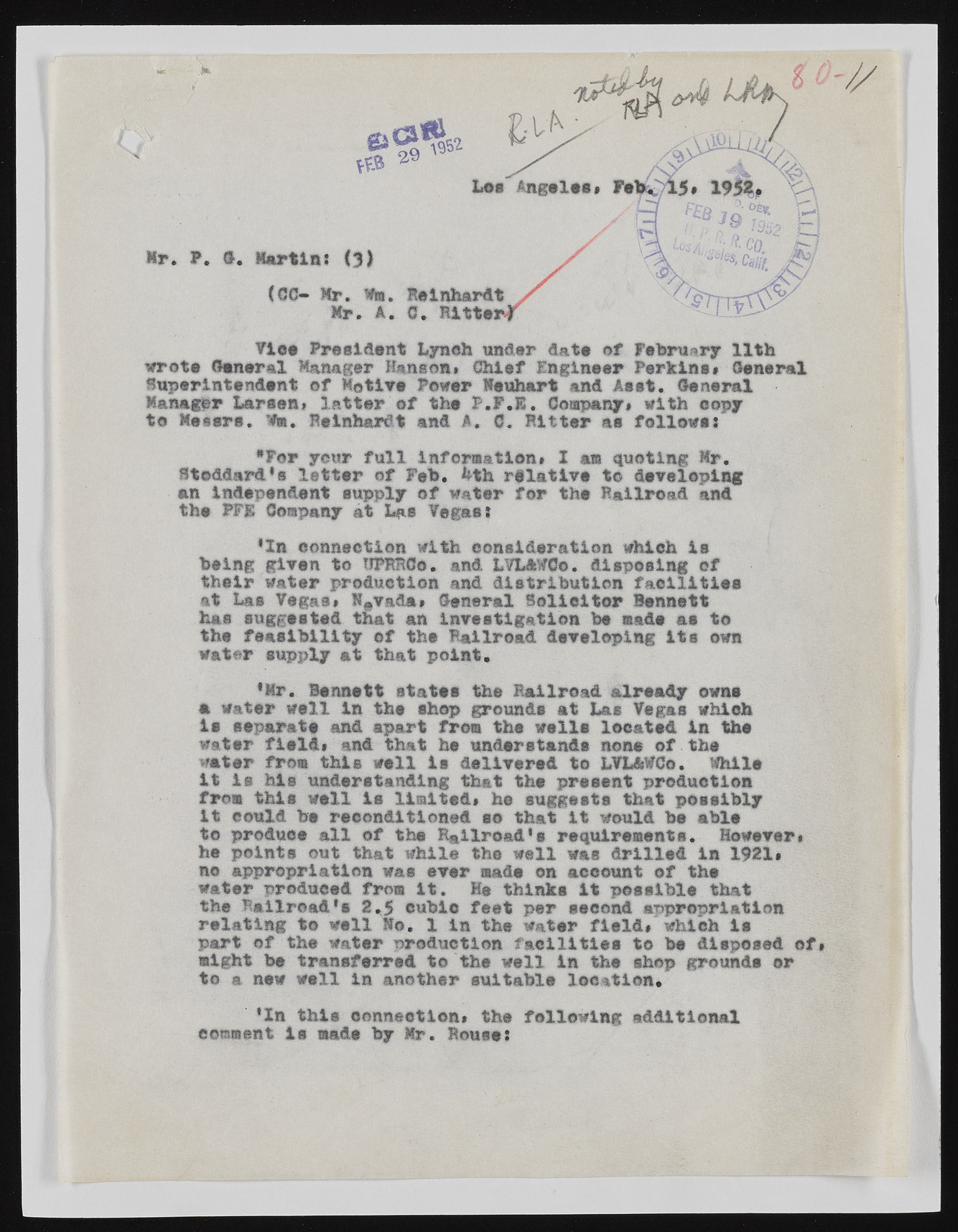Copyright & Fair-use Agreement
UNLV Special Collections provides copies of materials to facilitate private study, scholarship, or research. Material not in the public domain may be used according to fair use of copyrighted materials as defined by copyright law. Please cite us.
Please note that UNLV may not own the copyright to these materials and cannot provide permission to publish or distribute materials when UNLV is not the copyright holder. The user is solely responsible for determining the copyright status of materials and obtaining permission to use material from the copyright holder and for determining whether any permissions relating to any other rights are necessary for the intended use, and for obtaining all required permissions beyond that allowed by fair use.
Read more about our reproduction and use policy.
I agree.Information
Digital ID
Permalink
Details
More Info
Rights
Digital Provenance
Publisher
Transcription
\ if C F. G. Martin: <3) (CC- Hr. Ha. Reinhardt X Mr. A. c. Ritter* Ti«# President Lynch under data of Fabryary 11th watt General Manager Hanson* Chief Engineer Perkins* General Superintendent of Motive Fever Keuhart and Aset. General Manager Larsen* latter of the R.F.S. Company* with copy to Meters. ’*». Reinhardt and A. C. Ritter as follows: •For your full Information* 1 am quoting Mr. Stoddard’s letter of Feb. bth relative t© developing an independent supply of water for the Railroad and the PFE Company at Lae Vegas: ’Xn connection with oonsideratlon which is being given to trPRRCo. and LVLftWCo. disposing of their water production and distribution facilities at Las Vegas* Nevada* General Solicitor Bennett has suggested that an Investigation be made ae to the feasibility ©f the Railroad developing its own Water supply at that point. ’Mr. Bennett states the Railroad already owns a water well in the shop grounds at Las Vegas which is separate and apart from the wells located in the water field* and that he understands none of the water from this well is dsllversd to LVL&MCo. While it i s his understanding that the present production from this well is limited* he suggests that possibly it could be reconditioned so that it would be able to produce all of the Railroad*s requirements. However* he points out that while the well was drilled in 1921* no appropriation was ever made on aeoount of the water produced from it. He thinks it possible that the Railroad’s 2.5 cubic feet per second appropriation relating to well No. 1 in the water field* which is part of the water production facilities to be disposed of* might be transferred to the well In the shop grounds or to a new well in another suitable location. ’In this connection* the following additional comment is made by Mr. Rouse:

